*This story has been updated with STT’s response to our request for comment
We’ve known for a while that Sustainable Timbers Tasmania has been planning to log coupes near Maydena Bike Park. The coupe in question runs up against Maydena’s shuttle road but does not enter the bike park.
Late last week, Simon French announced he’d had word operations would begin on these coupes in the lead-up to the Enduro World Cup.
“STT doesn’t really give us or anyone else as a stakeholder or community member a great deal of detail around what they’re planning to do, or when they’re planning to do it. We hear of everything pretty much as it’s starting,” French told Flow.
We asked STT why now, and in a prepared statement, Suzette Weeding, General Manager Conservation and Land Management, Sustainable Timber Tasmania, said, “In one forest coupe in the area, referred to as TN031B, is an active roading operation. The current roading work will be finished in early March 2023.
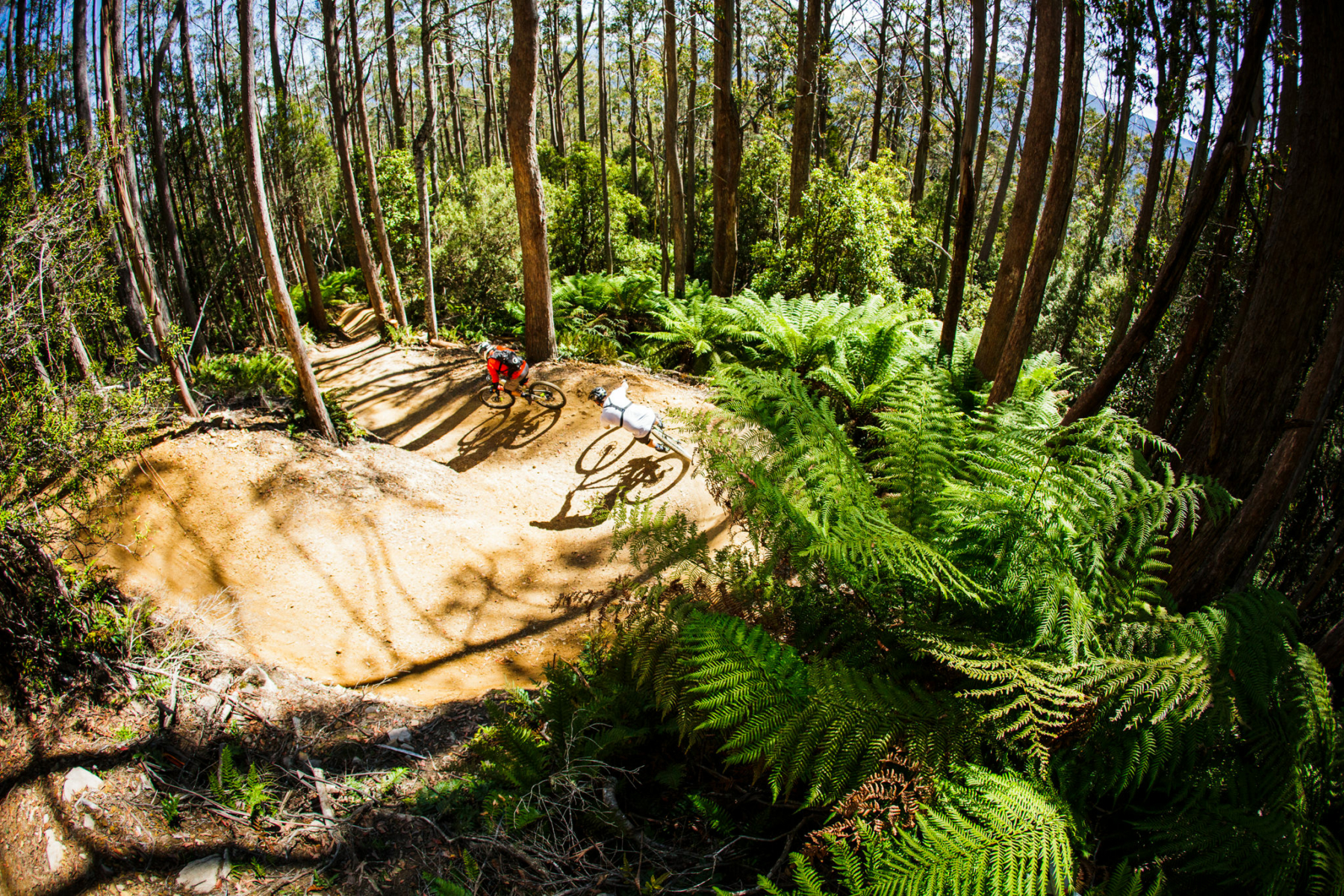
In consultation with the Maydena Bike Park in early 2022, Sustainable Timber Tasmania made a commitment not to conduct any forest operations in the vicinity of the bike park during the Enduro World Series launch in March 2023.”
“At this stage, no specific timeline for the harvesting of TN031B has been determined,” the statement continued.
According to French, he has long been in negotiations with STT to reduce the size of the coupe, and was successful in that effort. However, STT still plans to harvest a large section of native forest alongside the shuttle road near where the Midline trail comes out. No tree felling will happen within the bike park.
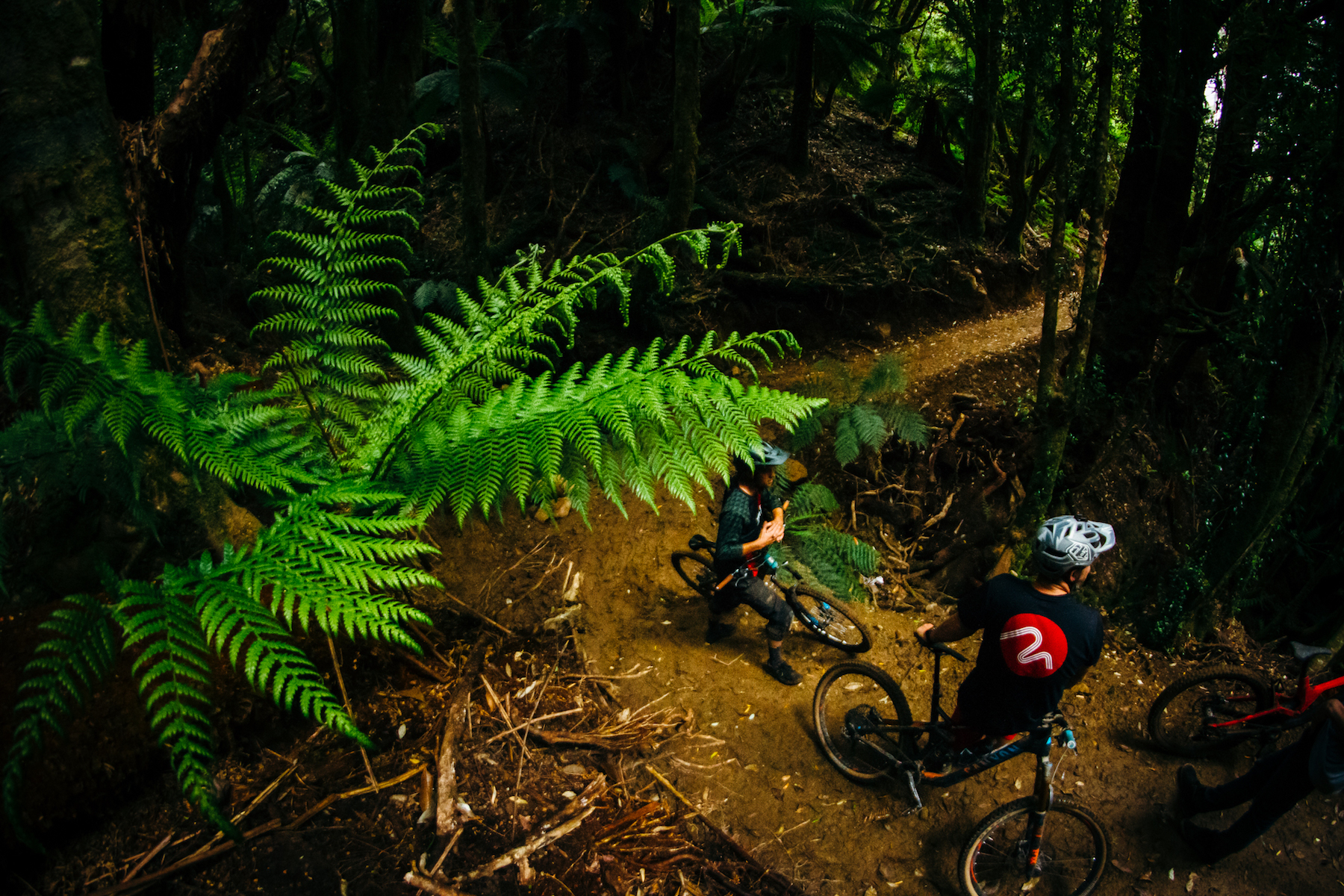
From what we understand, the harvest will go up to the shuttle road without a buffer. It’s unclear if the logs will be hauled using the shuttle road, or if the road will be operational for the bike park while this section of the harvest takes place.
Weeding’s statement did not address our questions as to why no buffer had been left.
Related:
- What does native logging mean for mountain biking in Derby?
- Tasmaniacs Assemble! A spectators guide to the Tassie Enduro World Cup
- What’s next for Maydena Bike Park?
Putting a damper on the celebrations
This is not the first time this plot of land has been harvested. In the statement we received from Weeding, it was pointed out that this plot was logged in the 1940s by the Risby Brothers, which is true. She went on to claim, “It is not old growth forest.”
According to according to STT Factsheet No 12, “Old growth forests are mature forests where the effects of any previous disturbance is now negligible.” The Risby Brothers were also using hand saws and axes, so while trees were felled, it’s not quite the same as a clearfell harvest conducted with modern heavy machinery.
This coupe has long been on STT’s agenda, and according to French, the bike park only just received a notification that operations would be commencing. Since then, there has been quite a lot of public outcry, even causing STT to respond with a social media aiming to do some crisis PR.

“The concern we have is that they’ve commenced work, which causes the public outcry. It’s semantics to argue about the particular nature of the operation. From the stakeholder and community perspective, they’re just as angry that the operation has started with roading, as they would be if it started with harvesting,” says French.
It’s no secret that native logging is an extraordinarily unpopular practice. According to a study leaked to the ABC in 2018 titled Community Perceptions of Australia’s Forest, Wood and Paper Industries: Implications for Social License to Operate, 65% of rural-based respondents thought native forest logging was unacceptable.
There is still a lot of native forest logging in Tasmania, and you don’t have to look far to find a substantial outcry against the practice. This is not the first time that mountain biking and native logging in the Island State have crossed paths; we reported extensively on the harvest operations near Derby and potential effects in the short and long term.
This should never have become a forestry vs tourism fight, despite STT seemingly fixated on making it one.
Beyond the ecological impacts of old-growth logging, French worries that STT’s actions will command the narrative while the EDR is in Tasmania. Maydena Bike Park and the Tasmanian Government have invested significant amounts of money to attract the Enduro World Cup to the Island State, and to bolster its image as an eco-tourism and mountain biking paradise.
“My immediate concern is that all of the amazing global media attention that we hopefully will get from the event shifts from being about what an amazing mountain bike destination Tasmania is, to how is this old growth logging is still happening, and all the angst around that,” he says.
“Whether it’s a conservation argument, or a business argument or whatever, we know the public is outraged about it,” he says. “I can’t control that. You (Flow) can’t control that. If the logging continues, that outrage is going to escalate a lot. That then is going out through the global media, and suddenly this story about Tasmanian mountain biking gets drowned out by conservation versus foresty and old-growth logging.”
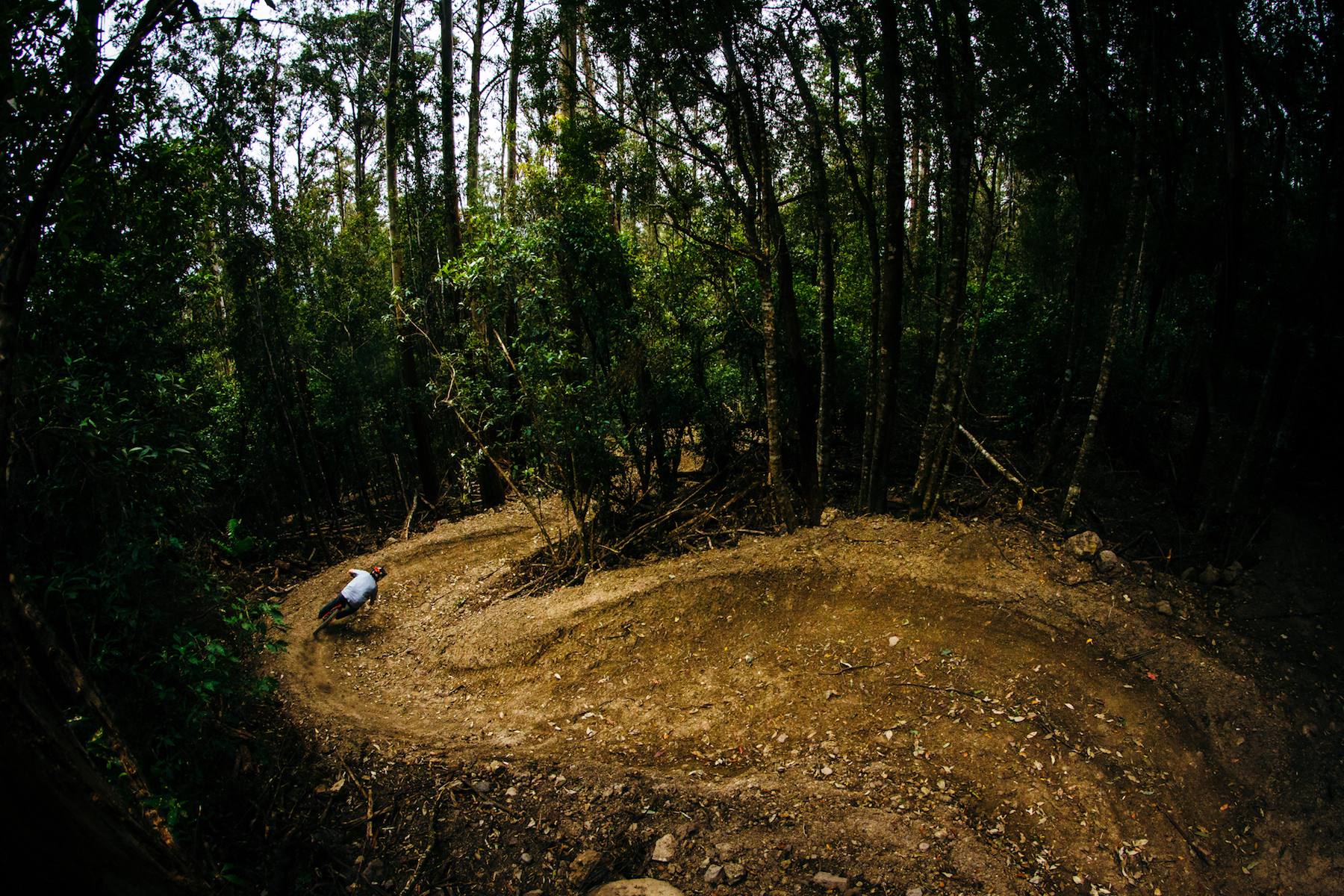
With this in mind, French tells Flow he believes the best way to turn down the heat, is for STT to stop operations until after the event so that the state-run logging company can undertake proper consultation into the outcomes of logging that coupe.
Again, we reached out to STT for comment on why the operation was being undertaken in the lead-up to the EDR. While Weeding’s statement did note that the clear-felling has not been scheduled, it did not address the reason why roading operations are being conducted in such close proximity to the event.
Will this affect bike park operations?
To reiterate, no harvesting operations will occur inside the bike park’s boundary, and no trees will be cut down on the trails. However, that does not mean this operation will not affect the bike park.
With the current plan, harvesting will take place right up to the road. Usually, a buffer zone is left, but in this case, STT has decided against it for whatever reason.
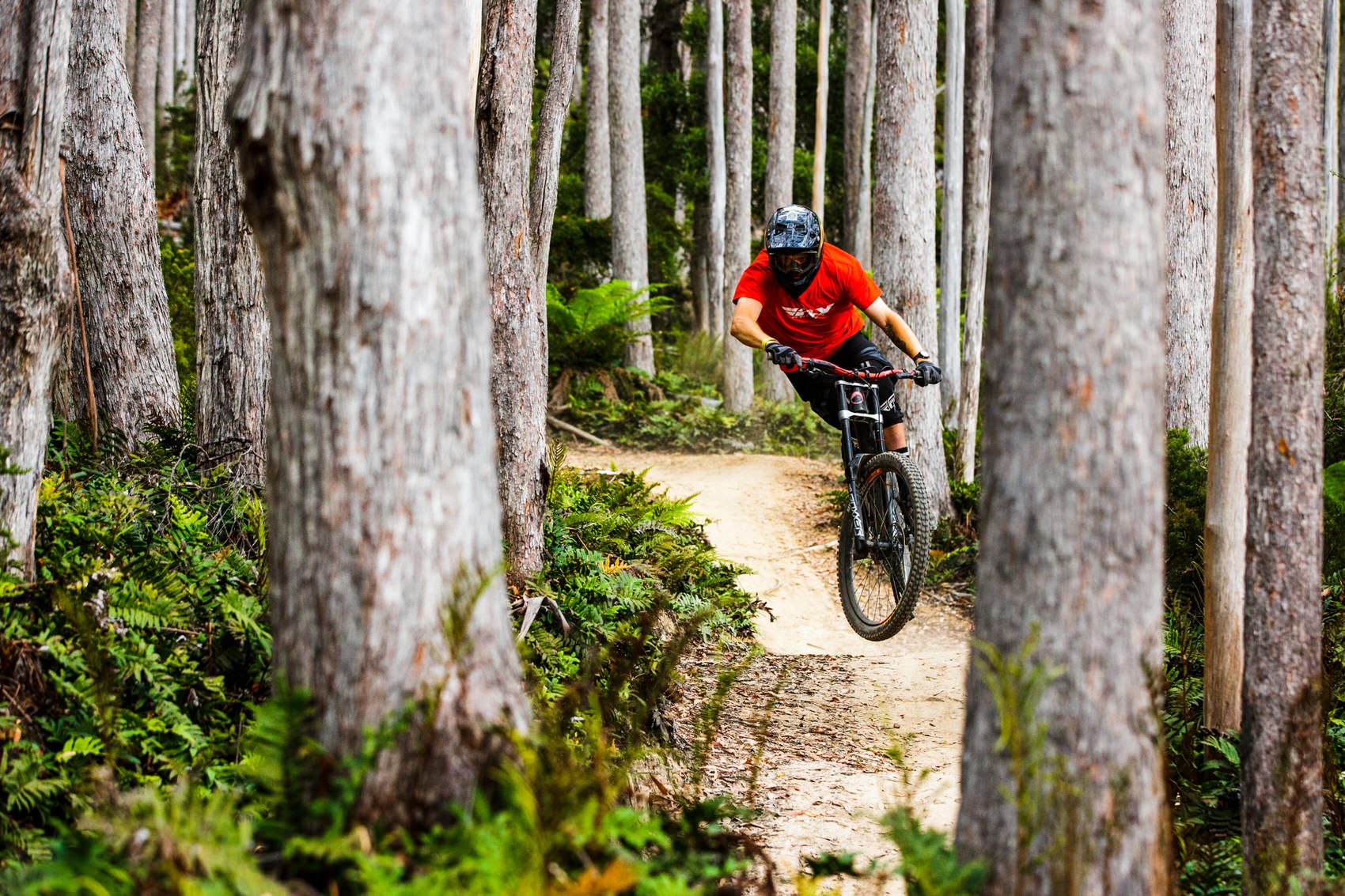
“At the moment, we don’t know if it’s not going to affect us operating on the shuttle road, which is the only way up the hill. There is no buffer zone at the moment, so that basically means they will be logging straight up to the road. Depending on what time of day they do that — and there is only so much daylight — how are we going to manage driving buses out there, if they’re felling trees onto the road?” says French.
We asked STT directly if logging operations would disrupt bike park operations on the shuttle road at any point during harvest and post-harvest and whether logging trucks would use the shuttle road. Based on Weeding’s statement, it’s still not entirely clear.
“Production forests managed by Sustainable Timber Tasmania sit approximately half a kilometre to the west of the Maydena Bike Park trails. Roberts Road, (is) also utilised by the Maydena Bike Park shuttle bus as part of its operations, is a forest road constructed to support forest operations.
Over the past few years, use of Roberts Road for the purpose of public and private forest harvesting, has been successfully managed by the on-ground forestry contractors and mountain bike shuttle bus drivers,” she said.
I don’t know how long after the harvest they burn or how long that takes, but it’s not going to be viable for us to operate during that burn — for pretty obvious reasons
French also expressed his concern about the post-harvest regeneration burn. According to Maydena’s figures, the bike park is valued at $ 5-million, and is an uninsurable asset.
In the past, STT has had trouble controlling these burns. In 2021 a post-harvest burn near the Styx River, intended to cover 23ha escaped containment and charred over 200ha of land. Also in 2021, a fuel reduction burn at a plantation near St Helens got out of control, putting the trail network and nearby properties at risk.
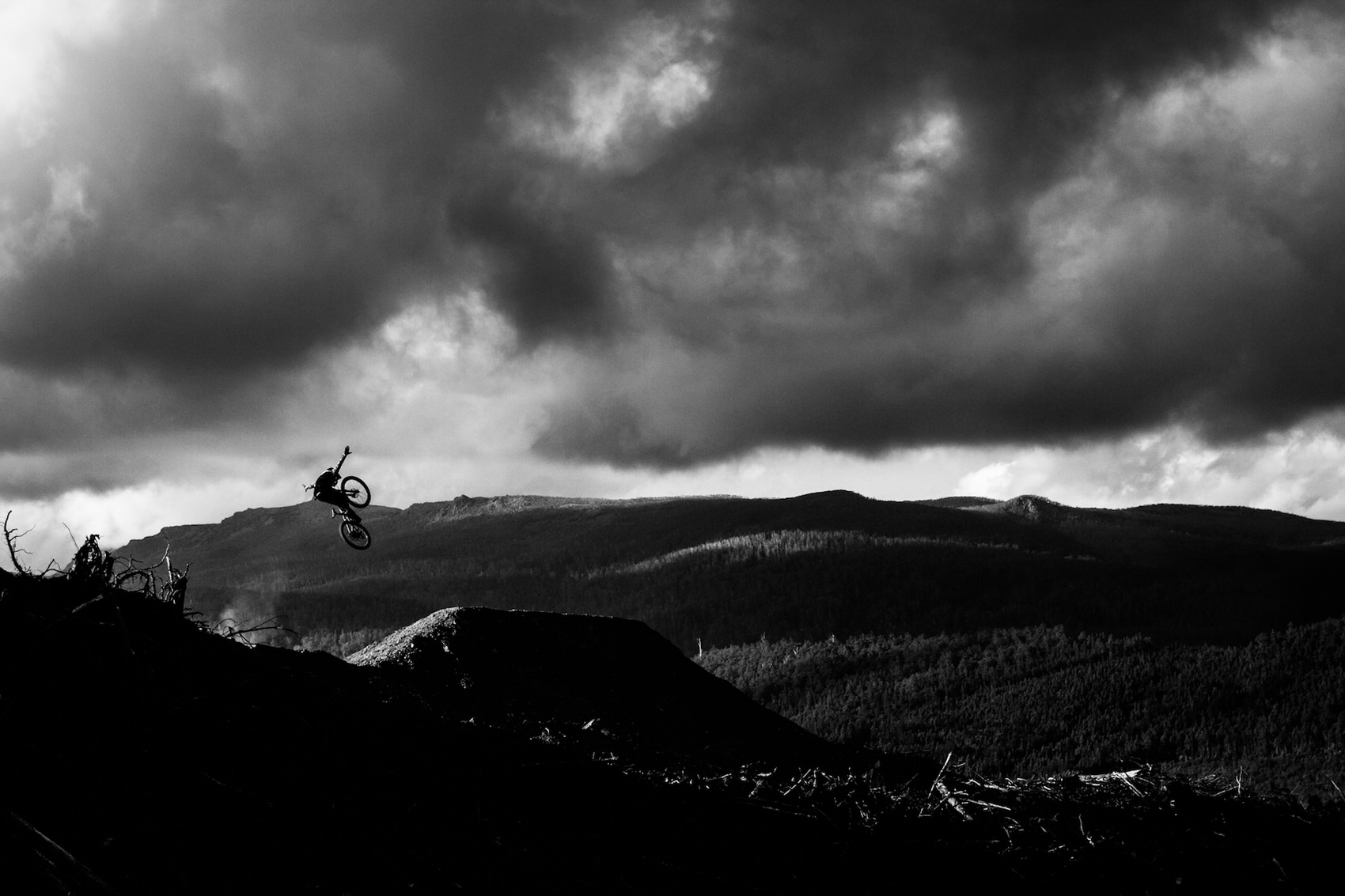
According to French, STT hasn’t provided the park with any details on its plans for the post-harvest blaze.
“I don’t know how long after the harvest they burn or how long that takes, but it’s not going to be viable for us to operate during that burn — for pretty obvious reasons,” he says.
According to research conducted by Dr David Lindenmayer AO, Professor of Ecology and Conservation Biology at the Australian National University, when a forest is logged and then regenerated, it becomes more prone to high severity fire for about 40-years after logging — we have done extensive reporting on this, you can read more here. Given the Gell River Fire — started by lightning strikes — burned within a few kilometres of Maydena, bushfire risk is real for the bike park and the local community.
Flow asked STT about its plans for the regeneration burn, plans for containment, and what happens if the burn escapes its lines. The statement provided did not address these questions.
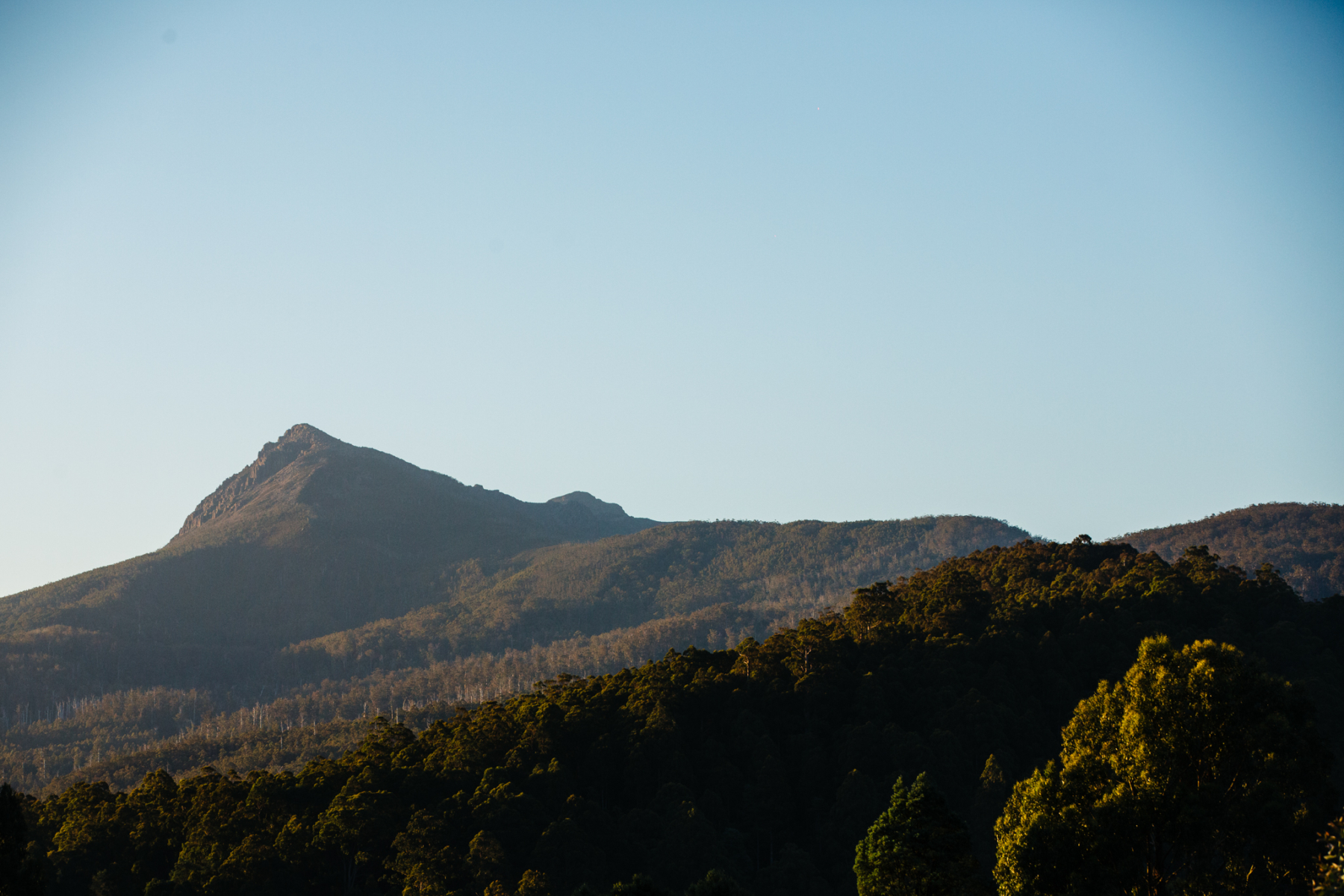
What happens now?
French made it abundantly clear that this isn’t about being anti-forestry and Maydena has worked with and around the timber industry since its inception. The town of Maydena itself was founded on silviculture, and there is a sizeable plantation forest around the lower part of the park.
“This is not, nor has it ever been an attack on forestry. This is about sensibly managing our scarce natural assets, and balancing a sustainable timber industry with a rapidly growing tourism industry. This should never have become a forestry vs tourism fight, despite STT seemingly fixated on making it one,” he says.
French tells Flow he has been in direct communication with Tasmanian Premier and Minister for Tourism, Jeremy Rockliff, and the Minister for Resources, Felix Ellis, to plead his case but hasn’t been able to create any movement.
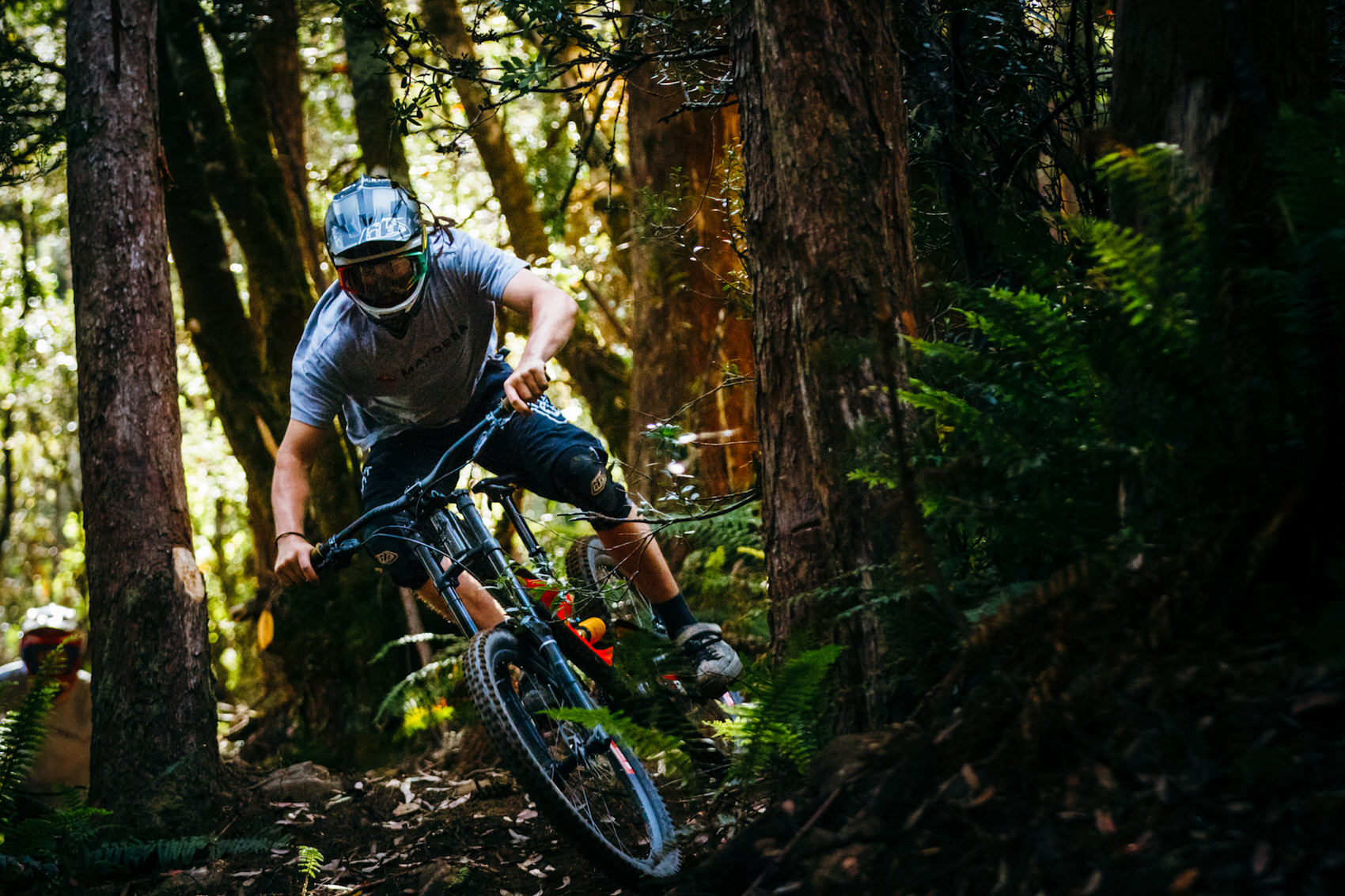
According to French, he will continue to dig his heels in, however, he also encourages folks who have been to the bike park to reach out to the Premier and let their thoughts be known.
“I think writing a personal email, particularly for people that have visited the park before, to let the premier know what’s important to them about the park and how important the natural values are to their visit and experience at Maydena,” he says.
We’ll be keeping an eye on this as it develops. Stay tuned folks.